What is the difference between Fresco Juices and Fresh Juices?
What is the difference between Fresco Juice vs. Fresh Juice?
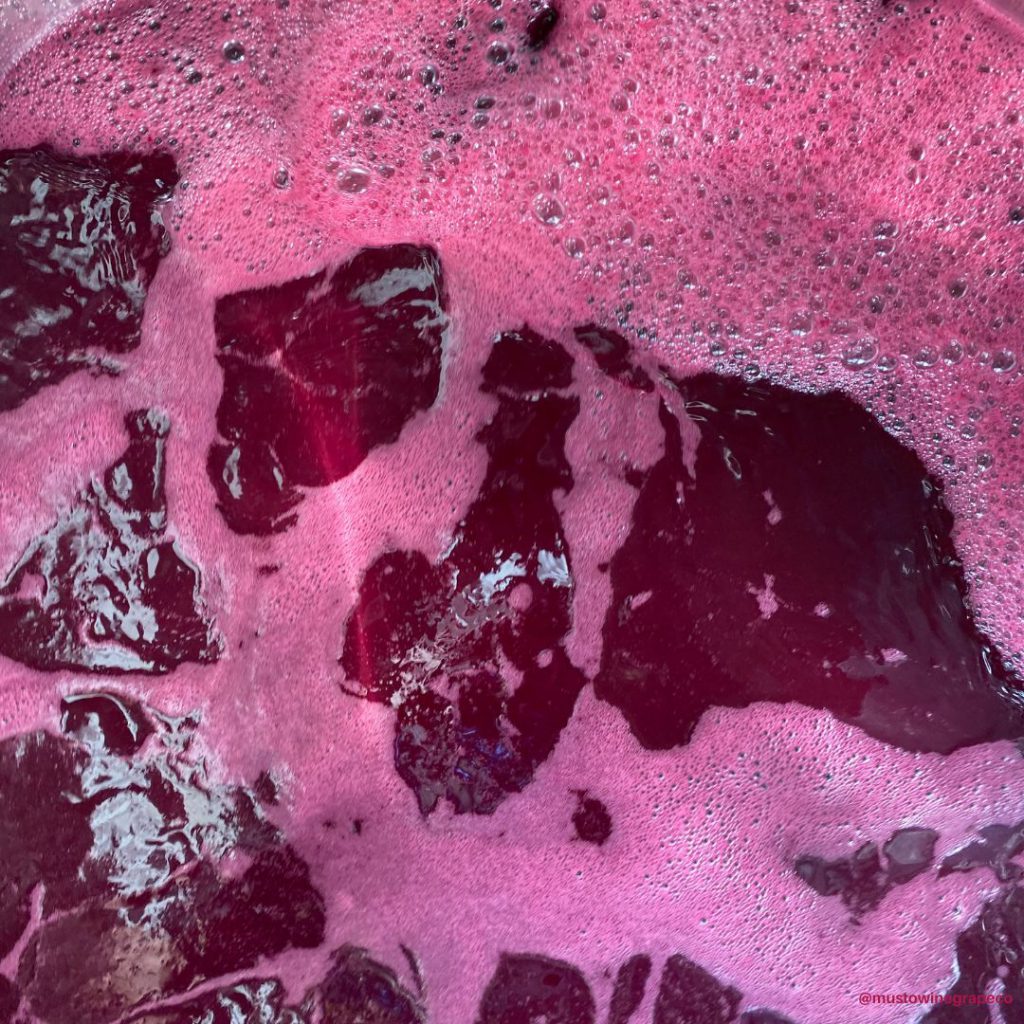
Fresco Juices:
Ever bake a cake from a box and it came out delicious? Did you know you could do the same with winemaking?
Mondiale Fresco is proud to be the only product to offer home winemakers their own vineyard in one unique package. Each pail of juice is pre-balanced and adjusted to ensure you have the best winemaking success possible. Just warm up the juice to fermentation temperature and watch it go.
What does “pre-balanced” and “adjusted” mean?
Every season Mother Nature gives us a different wine grape harvest. Some years the acid, pH, and sugars are all in line with each other. Most times they aren’t and there needs to be some slight adjustments made pre-fermentation to ensure top wine quality. The Fresco juices are adjusted so that the acid, pH, and sugar levels are all in balance with each other. This makes for an easier fermentation and, a very pleasing wine.
Depending on the varietal of wine you choose, enzymes and tannins might be added – all pre-measured, and ready-to-go, just open the packet and add to the pail. These add-ons help with wine clarity and mouthfeel, contributing to the “taste like made from scratch”, or in this case, as if fermented on the skins. The Fresco juices are the best juices to work with for busy winemakers. You get the juice warmed up, watch it ferment, age, and bottle.
Fresh Juices:
Fresh Juices come straight from the press!
Our fresh juices are from the grapes that are crushed, destemmed, and pressed right into the pails. For white wine, this is as if you were crushing and pressing yourself. For red wine the grapes are run through a heat or “hot” press in order to extract the color. Once these pails come up to temperature they can kick off because of the native yeast from the original grapes, or you can kill the native yeast and pitch your own yeast to ensure a more successful fermentation. Either way you are working with the fresh juice, not from concetrate. A delicous wine can be on your table as soon as Christmas!
So what is the difference?
The Fresh Juices are the straight from the press. The Fresco juices are straigth from the press, but pre-balanced and have a few additions made to them to make fermentation easier on the winemaker.
Either way you have delicious wine in the making!
To make an order please contact us via sales@juicegrape.com or call us at 877-812-1137, follow us on Facebook, Instagram, and Youtube, or check out the Harvest Tracker and Winemaker Blog on our website- juicegrape.com.
Upgrade Your Winemaking Juice with the AllGrape Pack!
Upgrade Your Winemaking Juice with the AllGrape Pack!
Making from Fresh Juice or Wine Kits produces a fantastic wine, but can sometimes be lacking in tannins, color, flavor, and mouthfeel. This isn’t the winemaker’s fault, this is becasue these types of product do not get ample time on the grape skins to give the wine that extra kick of complexity.
Lucky for you, We Have a Solution! Enter the AllGrape Pack
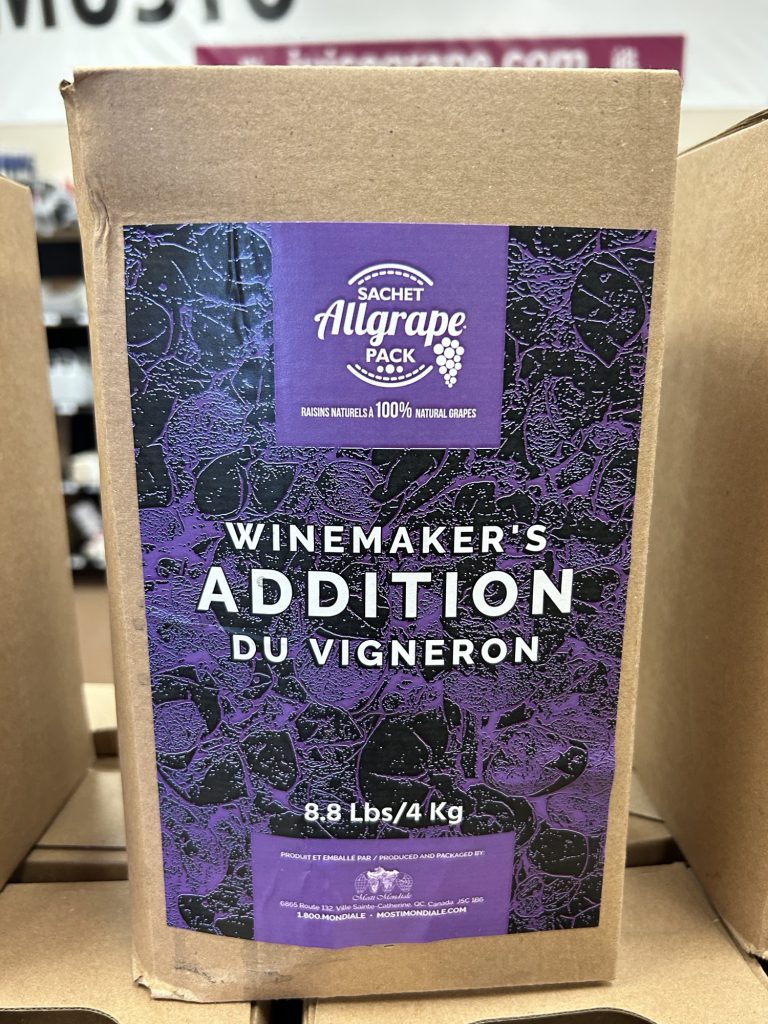
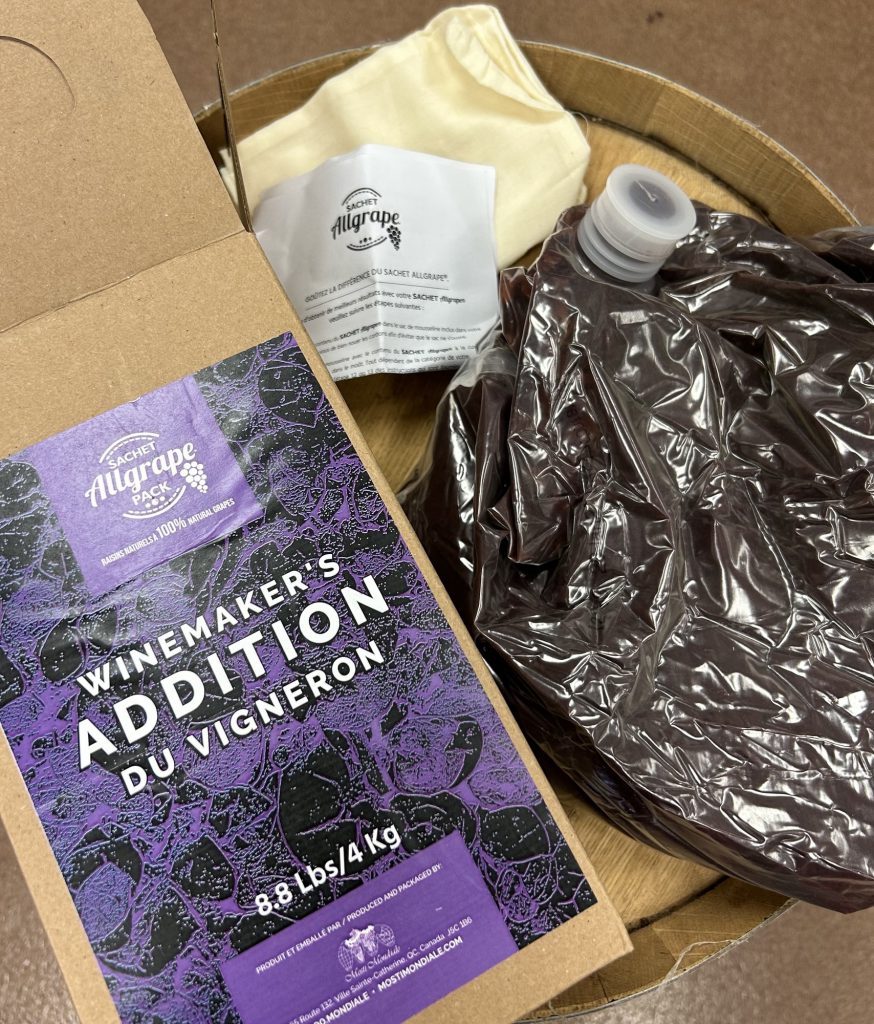
The AllGrape pack® contains 100% grapes, NO Fillers, NO sweeteners just 100% pasteurized crushed and destemmed grapes as “Mother Nature” intended!
Packed in a sterile, shelf-stable, bag in a box…taste the real Allgrape® difference.
Add it to your Fresh Wine Juice or Wine Kit and see a significant increase in the Flavor Profile, Tanninic Structure, and Mouthfeel in your Juice Wine!
It tastes as if you made wine from grapes!
Sam & Christina did an experiment with Chilean Merlot this Spring. We did one pail with the AllGrape pack and one pail without it. We couldn’t believe the difference! We believe in the product so much so that we discounted it so it’s easier to test out for yourselves. You won’t be disapointed. But hurry because this sale will only last until Novemeber!
FALL SPECIAL!
$33.00 – NOW $25.00
To make a wine juice order or if you have any questions about the AllGrape pack please contact us via sales@juicegrape.com or call us at 877-812-1137, follow us on Facebook, Instagram, and Youtube, or check out the Harvest Tracker and Winemaker Blog on our website- juicegrape.com.
The Italians are Coming!!
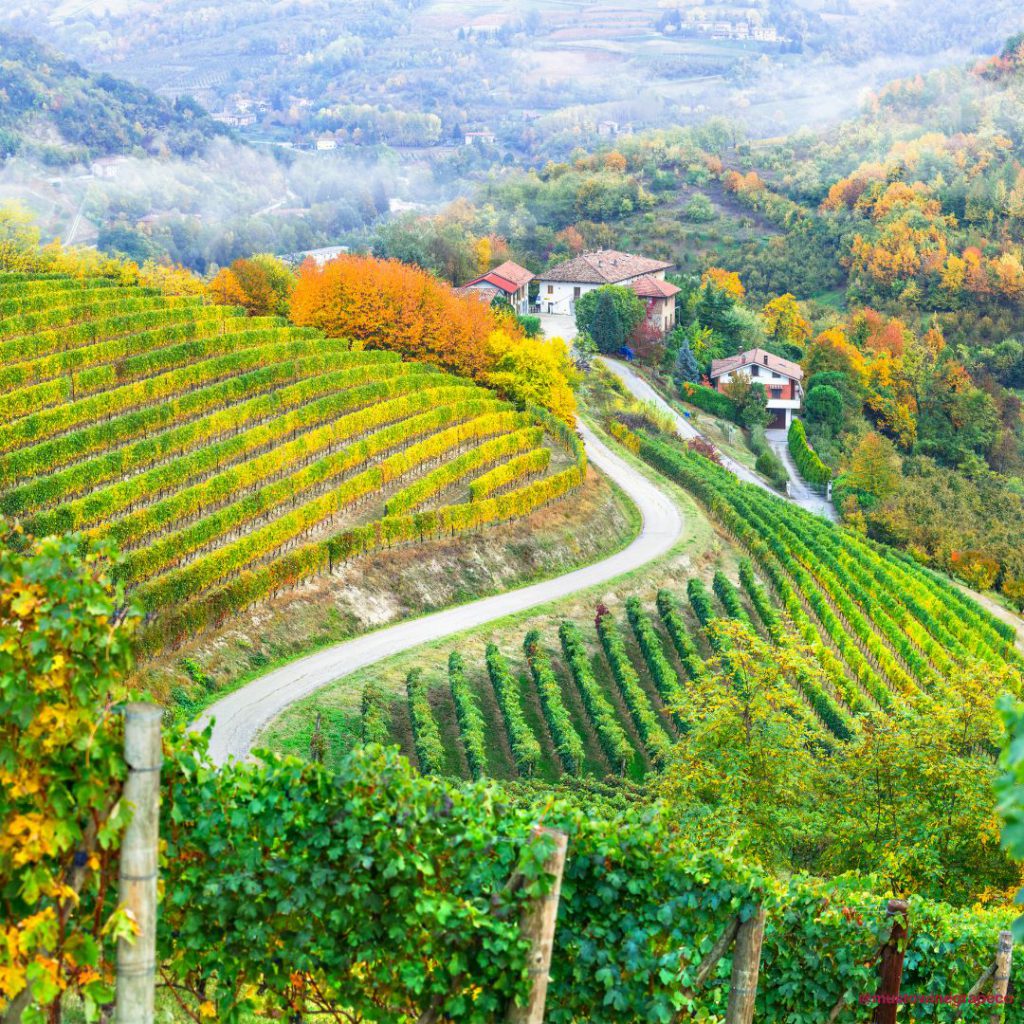
There are several compelling reasons to consider
making Italian wine from Musto’s Italian juices.
Variety:
Italy is one of the world’s largest wine producers, and it boasts an incredible variety of wine styles, grape varieties, and regions. Whether you prefer red, white, sparkling, or dessert wines, Italy offers an extensive range to explore.
Terroir:
Italy’s diverse geography, climate, and soils contribute to a rich tapestry of terroirs. Each wine region has its own unique characteristics, producing wines with distinct flavors and profiles.
Food Pairing:
Italian wines are known for their versatility and ability to complement a wide range of cuisines. Whether you’re enjoying pizza, pasta, seafood, or fine Italian cuisine, there’s an Italian wine that pairs beautifully with it.
Quality:
Italy has a long history of winemaking, and many Italian wineries are dedicated to producing high-quality wines. Italy has a significant number of prestigious wine regions and producers, including those in Tuscany, Piedmont, Puglia, and Veneto.
Heritage:
Italy has a deep cultural and historical connection to winemaking. This heritage is reflected in the traditions, techniques, and dedication of Italian winemakers.
Uniqueness:
Italy is home to several unique and iconic wine styles, such as Barolo, Amarone, Chianti, Prosecco, and Brunello di Montalcino, among others. Exploring these wines can be a delightful and enriching experience.
Whether you’re looking for a bold red wine like Barolo, a crisp white like Pinot Grigio, Italy has something to offer for every palate and occasion!
Musto Wine Grape will be receiving Italian wine juices this October! See below for a full list of what is available from Italy this fall.
Musto Wine Grape Italian Juice Offerings:
Fresh Italian Juices:
Amarone
Barolo
Brunello
Chianti
Dolchetto
Lambrusco
Montelpulciano
Moscato
Nebbiolo
Nero D’Avola
Pinot Grigio
Sangiovese
Trebbiano
Valpolicella
Italian Fresco Juices (pre-order only):
Amorosso (Amarone)
Granbarile (Barolo)
Castel del Papa
Il Toscano (Chianti)
Lambrusco
Merlot
Montelpulciano
Nebbiolo
Primitivo
Sangiovese
Pinot Grigio
Trebbiano
To make an order please contact us via sales@juicegrape.com or call us at 877-812-1137, follow us on Facebook, Instagram, and Youtube, or check out the Harvest Tracker and Winemaker Blog on our website- juicegrape.com.
Wine Spotlight: Lanza-Musto Vineyards Malbec
Lanza-Musto Suisun Valley Malbec is a wine that brings velvety sweetness and dark complexity to the table.
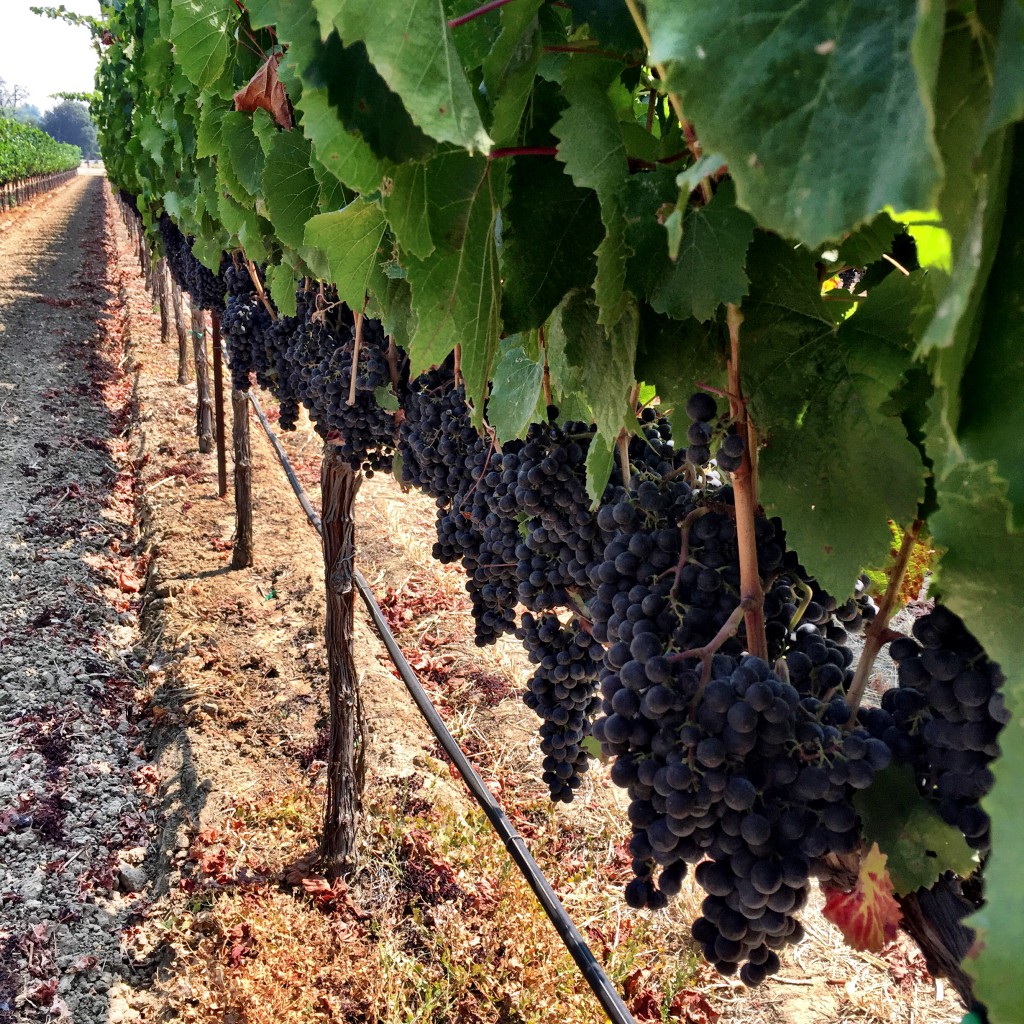
Suisun Valley, located in Solano County, California, is not traditionally known for Malbec wine production like some other regions, but it does have a small and growing reputation for producing high quality Malbec wines. If you’re considering buying Suisun Valley Malbec grapes, here are some reasons to consider:
Unique Terroir:
Suisun Valley’s terroir, characterized by its climate, soil, and topography, offers a unique and distinct environment for grape cultivation. While it may not have the recognition of regions like Argentina (known for Malbec), this uniqueness can result in wines with a different expression of the Malbec grape.
Varietal Exploration:
If you enjoy exploring different expressions of a grape variety, trying Malbec from a less common region like Suisun Valley can be an exciting adventure. It can offer a different flavor profile compared to Malbecs from more traditional regions.
Food Pairing:
Malbec is a versatile wine known for its medium to full body and rich, dark fruit flavors. Suisun Valley Malbecs can pair well with a variety of foods, including grilled meats, hearty pasta dishes, and cheeses.
Exploration:
If you’re an adventurous winemaker who enjoys exploring and discovering hidden gems, Suisun Valley Malbec can be an interesting addition to your wine collection.
Flavor Profile:
Medium bodied, mellow, fruity – raisins, fresh picked blueberries, plum, with soft, fine grained tannins, deliciously drinkable mocha notes.
Previous Season Grape Chemistry:
- Brix: 24.5
- pH: 3.29
- TA: .65gms/100ml
- Clone 9
- Planted in 2009
- Soil: Yolo, Silty Clay Loam
- VSP posititioning
To make an order please contact us via sales@juicegrape.com or call us at 877-812-1137, follow us on Facebook, Instagram, and Youtube, or check out the Harvest Tracker and Winemaker Blog on our website- juicegrape.com.
Product Spotlight: Crusher Destemmer
You’ve got your fresh wine grapes in tow, and now its time to make some wine! If you don’t take advantage of our crush and destem service, you’ll have to crush and destem your grapes. We offer a variety of crushers, and crusher-destemmers to fit any winemaking project. We’ll cover some of our top options to help you determine which one suits you best! The most popular crusher destemmer is the stainless steel electric crusher destemmer. With an electric motor that does all the elbow work featuring an all stainless steel assembly, it is corrosion resistant and will last you for many winemaking seasons to come.
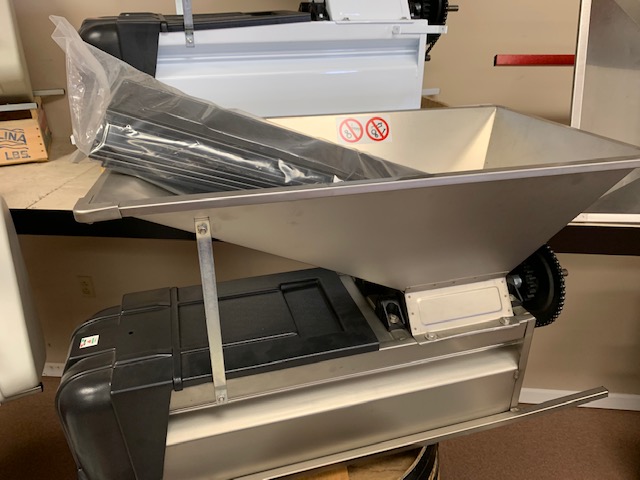
Stainless Steel Electric Crusher Destemmer
This crusher destemmer is motorized, with a stainless steel hopper and body. It has an hourly production rate of 1,500kg (about 3,330lbs). Its electric motor is 100volts/1hp, and it’s dimensions are 100 x 550 x 580h mm. The hopper dimensions are 900 x 460 mm and it has a removable protection box. This piece of equipment is a great investment for a winemaker who has plans to crush and destem an average of 50 or more lugs of grapes. With proper cleaning and storage, this machine will last a winemaking lifetime! We also carry the matching stand for our crusher destemmers, in both painted and stainless steel.
If the stainless steel crusher destemmer is a bit out of your winemaking budget, we carry one nearly identical but that is painted:
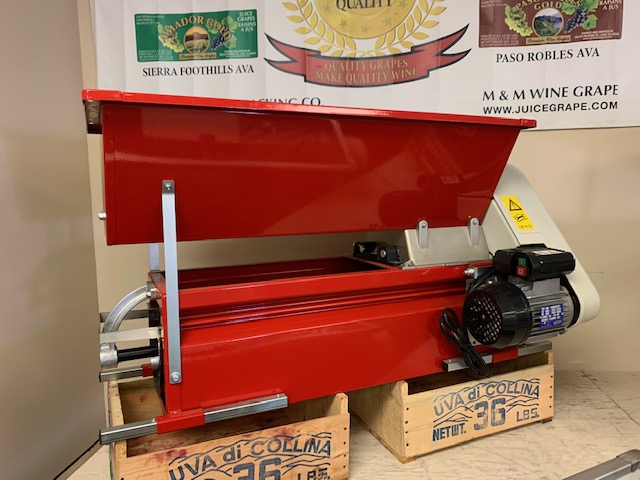
Electric Crusher Destemmer with Painted Hopper and Body
All the specs are identical to the stainless steel crusher destemmer except for the fact that this one is painted steel. The downfall of this machine is that it is susceptible to corrosion if not cleaned and stored properly. With proper cleaning and storage, it will surely last you many years. If you’re looking for something in the middle, we have that too!

Electric Crusher Destemmer with Stainless Steel Hopper and Painted Body
If you’re looking for a slightly more budget-friendly crusher destemmer with that boost of corrosion protection, this stainless steel hopper, painted body crusher destemmer is perfect. Once again you’ve got identical specs to our other options above, without having to compromise too much on either advantage of corrosion protection or budget.
If you are a home winemaker with less than 50 lugs of grapes on average and a smaller equipment budget, we also carry manual grape crushers and crusher destemmers. They come in the same options as our electric crusher destemmers including fully stainless steel, fully painted, or stainless steel hopper/painted body.
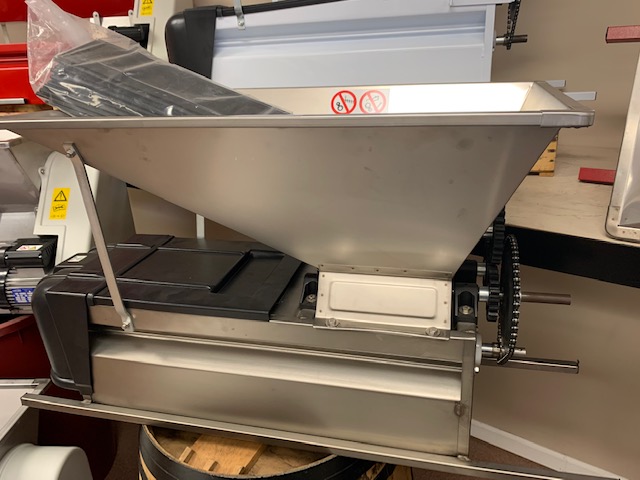
Stainless Steel Manual Crusher Destemmer
The Grifo hand powered crusher destemmer has a hopper size of 900 x 500 mm, and the Aluminum rollers are 220 mm. The hourly production rate is about 700-800kg (1500-1750lbs) and is a great option for a winemaker processing up to about 50 lugs of grapes and is looking for corrosion protection.
Painted and Stainless/Painted Manual Crusher Destemmer
With the same specs as the stainless steel but more wallet friendly, the painted and stainless manual crusher destemmer is a great option.
With lots of options to choose from, Musto Wine Grape has your winemaking needs taken care of.
Interested in making your own wine? Musto Wine Grape Company is here to help! Musto’s New England’s largest supplier for home winemaking products and services. Visit juicegrape.com or give us a call at (877) 812 – 1137 to learn more.
Top 7 Winemaking Tips for the Spring Harvest
The Spring Harvest is underway! It’s time to get yourself set up for your Spring fermentations.
-
Plan out your batch
- What kind of wine do you want to make?
- Review your ferementation notes from previous seasons
- Taste wines from Chile and South Africa for inspiration
-
Review how to adjust your must
- Adjusting your Brix, TA, and pH
- Take an online class if need a referesher
-
If making wine from juice, decide on Fresco vs. Non Fresco Juices
-
Decide on the type of yeast you want to use
-
PRE ORDER
- Give us a call at 877-812-1137 or email us at sales@juicegrape.com
-
Think about the temperatures in your cellar
- Do you need extra heat?
- Do you need AC?
-
Keep an eye on the Harvest Tracker for updates on the Spring Harvest
Interested in making your own wine? Musto Wine Grape Company is here to help! Musto’s New England’s largest supplier for home winemaking products and services. Visit juicegrape.com or give us a call at (877) 812 – 1137 to learn more.
How to Make Syrah Wine from Chilean Wine Grapes
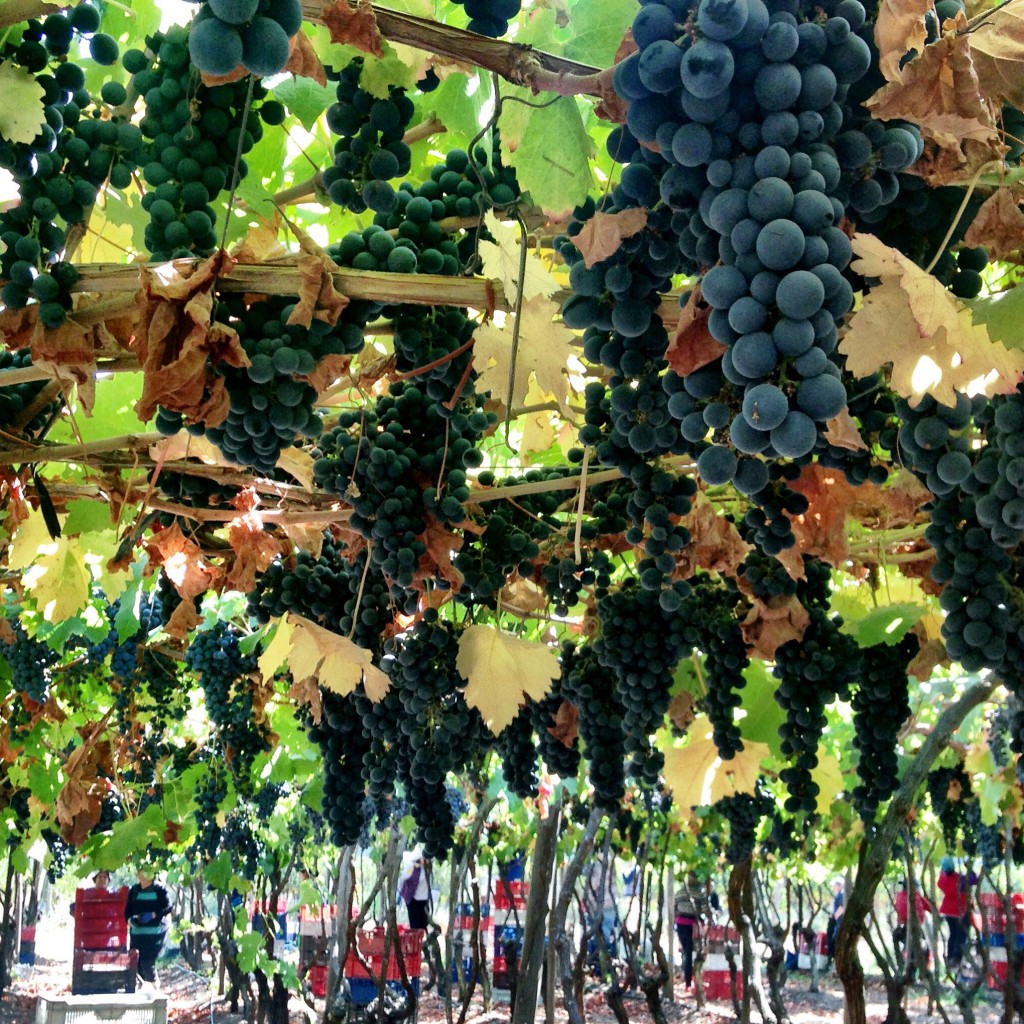
Chilean Syrah from Colchagua Valley has received high praise from publications like Wine Enthusiast, earning 93+pts. It’s a wine variety that is often overlooked from Chile and is a wine worth making this season. Chilean Syrah boasts flavors of plum, wild berry, and earth aromas. I highly suggest introducing this wine to oak barrels or an oak infusion. The medium acidity and powerful aromas are complemented by the French Oak flavor profile.
Yeast Suggestion: CSM yeast
Oak Suggestion: French oak barrels or chips
Wine Flavor Profile: Bold, medium tannins, blackberry, plum, wild berry, leather, smoke, chocolate, and oak
How to Make Syrah Wine from Chilean Wine Grapes:
- Crush Syrah grapes into a sanitized bin or tub. (Each 18lb crate will make 1.25 gals of finished wine).
- Apply 50ppm of Potassium Metabisulfite and stir well. Allow to sit for 8-12 hours.
- Apply .5ml of Color Pro Pectic enzyme per box diluted into a 10% solution with water to the must and stir. Allow to sit for another 8-12 hours.
- Mix Booster Rouge, FT Rouge, and Opti-Red, with spring water until it is the consistency of pancake batter and pour over top of crushed grapes. Mix in well.
- Add rehydrate CSM yeast (1g/gal) with Go Ferm rehydration nutrient and warm water. Allow to sit for 15 minutes and pour over top of crushed grapes.
- Punch down grapes 3 times per day throughout the duration of fermentation and monitor temperature and Brix levels daily. Use a hydrometer to test sugar content in a strained juice sample. Make sure the temperature does not exceed 85F.
- One day after adding the yeast, add Fermaid O, mixed with spring water into the pancake batter style slurry. Dump into grapes during a punch down.
- After the depletion of 1/3 of the Brix (when the Brix level is between 16-11), add Fermaid O that is mixed with spring water into the pancake batter style slurry. Dump into to grapes at a punch down.
- Add Malo-lactic bacteria the same day as the Fermaid K. If you are using liquid cultures, just pour over the grape must and mix. If you use the dry cultures, rehydrate them in warm spring water according to their specific directions, utilizing any rehydration nutrients recommended.
- When the Brix have dropped below zero, press the wine into a sanitized tank, carboy, or demijohn. Make sure the vessel is topped up all the way to the top of the neck and sealed properly with a bung and airlock.
- Rack after 48 hours and then again in a week. Allow MLF to complete before adding sulfites.
- Allow the wine to age and rack it every 2 months and add sulfites when racking.
- Add oak infusion after 2nd or 3rd racking. Taste test along the way until the oak profile is where you want it to be.
Interested in making your own wine? Musto Wine Grape Company is here to help! Musto’s New England’s largest supplier for home winemaking products and services. Visit juicegrape.com or give us a call at (877) 812 – 1137 to learn more.
What is Bud Break?
Happy first day of Spring Winemakers!
Our California grapes are starting to go through bud break.
Here is a nice view of our Cry Baby Thompson Seedless and Grenache grapes “waking up” 🍇
What is Bud Break?
Bud break is the start of the grape vine’s annual cycle. It is a relaxing time in the vine’s life as long as they don’t experience any intense weather occurrences, such as frost. Frost can kill the buds or delay their growth.
Check out what Bud Break looks like in Chile! (link)
Interested in making your own wine? Musto Wine Grape Company is here to help! Musto’s New England’s largest supplier for home winemaking products and services. Visit juicegrape.com or give us a call at (877) 812 – 1137 to learn more.
Product Spotlight: CSM Yeast
Product Spotlight: CSM Yeast
CSM yeast was derived from Bordeaux and helps create a vibrant aromatic profile. CSM aids in adding complexity to the palate and pairs well with malolactic fermentation.
Why you want to use it:
It’s the perfect yeast for the Chilean fruit. It reduces vegetal aromas, adds complexity, stabilizes color, and helps increase the aromatic profiles of berries and spices.
Use Tips:
Fermentation starts quickly with this yeast. Be prepared to see Brix drop 24 hours after inoculation. It can stand up 14% ABV and can handle temperatures from 59–90°F. However, I highly suggest keeping your fermentation temps lower than 75°F. Once you hit 80°F you lose aromas and “burn off” flavors. Keeping your wine between 59–75°F during fermentation is a best practice.
You also want to use nutrients when using CSM; nutrients such as Fermaid-O and Fermaid-K. CSM tends to produce H2S (rotten egg smell) if there aren’t enough nutrients during fermentation.
Avoid cold shocking the yeast at inoculation. You’ll want to get the must and the yeast starter within a few degrees of each other before pitching the yeast starter. But without temperatures falling lower than 55°F. Temps below 55°F could stall fermentation and/or kill the yeast.
Goes best with:
CSM was cultivated to help ferment Cabernet Sauvignon, Cabernet Franc, Grenache, Merlot, Sangiovese, Petit Verdot. However, we have seen it used on Carmenere, Malbec, and Syrah from Chile with great results.
Dosage:
6gm/gals
Flavor Profile:
Cherry pit, raspberry, blackberry, spice, violet, bark, and sweet pepper
Ready to make wine? Musto Wine Grape Company is here to help you make the wine of your dreams! The Spring South African & Chilean winemaking season starts soon! Secure your winemaking grapes or juices and give us a call at (877) 812-1137 to speak with one of our Musto Crush Crew members. We can get you set up with everything you need and provide customer support along the way to ensure your success!







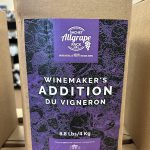

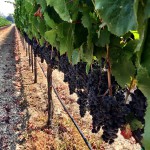


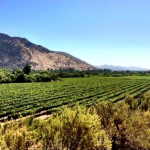

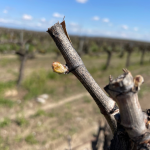
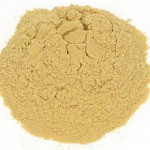
Recent Comments